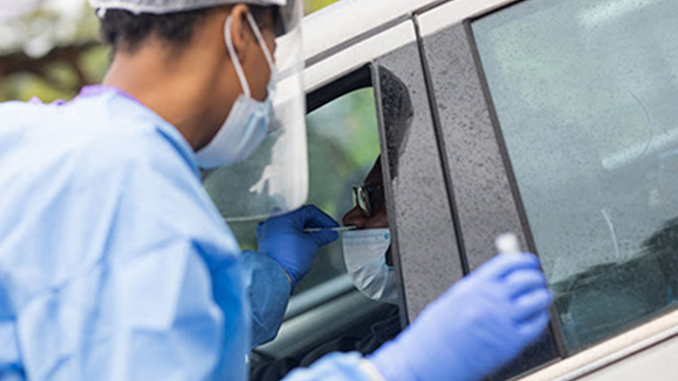
Community-based testing to help improve access, acceptance, uptake, and appropriate follow-up to COVID-19 testing in traditionally underserved populations.
Published: December 3, 2020
The University of Alabama at Birmingham will launch a community-based testing model in Jefferson County, Alabama, as part of an effort to improve access, acceptance, uptake and appropriate follow-up to COVID-19 testing in traditionally underserved populations. UAB’s Minority Health & Health Disparities Research Center has received funding from the National Institutes of Health RADx-UP program to carry out the three-pronged interventional program.
A part of the NIH Rapid Acceleration of Diagnostics initiative, the RADx Underserved Populations program supports research that aims to better understand COVID-19 testing patterns among underserved and vulnerable populations; strengthens the data on disparities in infection rates, disease progression and outcomes; and develops strategies to reduce the disparities in COVID-19 testing.
The UAB effort builds on a successful pilot testing program conducted by the MHRC and Live HealthSmart Alabama, the inaugural UAB Grand Challenge project that provided testing to African American and Hispanic residents in Jefferson County. The results of this initial testing program showed that residents of vulnerable communities found the three-component model to be more acceptable in terms of trust and access.
- Robust pre-testing community engagement to improve the reach and acceptability of COVID-19 testing.
- Targeted mobile testing located in underserved neighborhoods to increase access to and uptake of COVID-19 testing.
- Culturally appropriate post-testing navigation/assistance and follow-up services to ensure better impact and health outcomes.
The current project will test the effectiveness of this neighborhood mobile testing model in comparison with the traditional, fixed, health systems-based testing to provide key evidence to inform future testing and vaccination efforts.
“Study findings will provide evidence that can help increase testing and follow-up among vulnerable populations and address the stark disparities in COVID-19 outcomes,” says Mona Fouad, M.D., director of the MHRC and principal investigator for the UAB RADx-UP-funded study. “Additionally, results may help in planning for fair and efficient vaccine distribution going forward.”
The overarching goal of the RADx-UP initiative is to understand the factors associated with disparities in COVID-19 morbidity and mortality and to lay the foundation to reduce disparities for those underserved and vulnerable populations who are disproportionately affected by, have the highest infections rates of, and/or are most at risk for complications or poor outcomes from the COVID-19 pandemic. NIH defines those groups to include African Americans, American Indians/Alaskan Natives, Latinos/Latinas, Native Hawaiians, older adults, pregnant women, and those who are homeless or incarcerated.
